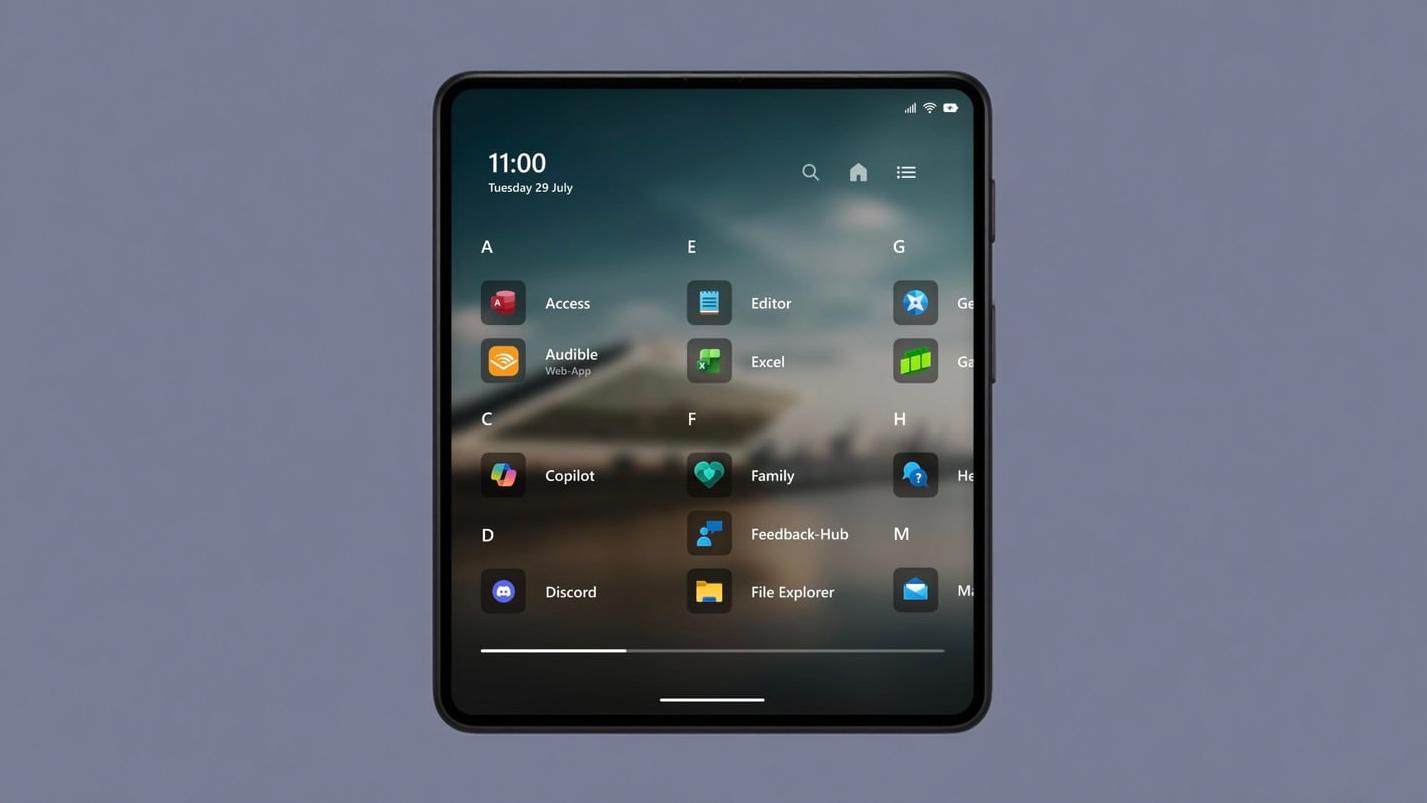Microsoft's biggest mobile regret: stunning Windows Astria concept shows how Windows Phone could have won with Fluent Design and Android apps
A breathtaking fan concept, Windows Astria, resurrects Windows Phone by merging Windows 11 Fluent Design, beloved Live Tiles, and native Android app support. it’s the Microsoft mobile OS that should have been.

"The decision I think a lot of people talk about — and one of the most difficult decisions I made when I became CEO — was our exit of what I'll call the mobile phone as defined then," indicated Microsoft CEO Satya Nadella. "In retrospect, I think there could have been ways we could have made it work by perhaps reinventing the category of computing between PCs, tablets, and phones."
The quote above discusses Satya Nadella's strategic mistake after becoming CEO, which potentially sealed Windows Phone's huge potential and fate in the Microsoft graveyard. But perhaps more interestingly, former Microsoft CEO Steve Ballmer indicated that the company "paranoia and confidence" in Windows fumbled its opportunity in the smartphone landscape.
"We were too confident. I don’t think we stuck with Windows too long," Ballmer added. "I think what we did is we tried to put Windows in places that it didn’t naturally go".
And while the Windows Phone ship has seemingly completely sailed for Microsoft, a visionary designer recently shared a stunning concept inspired by Microsoft's Windows Phone dubbed Windows Astria.
Bringing Fluent Design to Mobile: My Reimagining of Windows Phone UI and Live Tiles (Windows Astra Concept) from r/windowsphone
Right off the bat, Windows Astria is heavily inspired by Microsoft's modern Windows 11 Fluent Design language. It also brings back Windows Aero from the Windows Vista days back to life, much like how Apple borrowed a page from Microsoft's book with Liquid Glass. The Mica effect is consistent across the operating system, including tiles, settings, and notifications.
Live Tiles made Windows Phone's user experience more appealing, and as you'd have guessed, the feature has also made a comeback in the concept, which as described by the concept designer "is scaled for modern screens, fully dynamic, information-dense, and beautifully integrated with the new visual style."
One of the main reasons that led to Windows Phone's death was a weak app ecosystem. Its unique architecture made it difficult for developers to build apps, but The Windows Phone Revival concept addresses this issue. Windows Astria runs Android apps natively using a technology similar to the Windows Subsystem for Android (WSA). As such, the Windows user experience is consistent across all apps.

I've redesigned core apps like MS Word (fully functional Ribbon UI optimized for touch), Maps, Calculator, and even created a system-integrated Wallet app for NFC payments and subscription management. I've also visualised how heavy PC apps like the 3D Viewer can run natively on the mobile device.
JoeRasp96, Windows Astria concept designert
Perhaps more interestingly, the concept design, Windows Astria, isn't restricted to standard smartphones alone. It also works seamlessly on devices with a bigger screen real estate, potentially making it futureproof in a world that's rapidly embracing foldable phones. The designer demonstrates this via the Luna Fold (which is heavily inspired by Microsoft's Surface phone but with a modern twist).

FAQ
Is Microsoft bringing back Windows Phone?
While the company has received a lot of backlash from users for the strategic mistake, it has remained silent about reviving the beloved device despite woes from users.
What is Windows Astria?
A concept design shared on Reddit demonstrates how a modern Windows Phone could look with Windows 11's Fluent design language, better developer and app support, and a future-proof user experience that supports foldables.
Is Astria an actual phone I can buy?
No — Astria is a concept project. It’s not going into production or being sold commercially.
Why revive Windows Phone now?
Fans still admire Windows Phone’s design and unique interface. Astria is a way to showcase what the OS could have been.
What are Live Tiles?
Microsoft used the feature in the Start menu as an overview of app content and notifications like news and emails. As such, users could preview this information without necessarily opening an app.

Follow Windows Central on Google News to keep our latest news, insights, and features at the top of your feeds!

Kevin Okemwa is a seasoned tech journalist based in Nairobi, Kenya with lots of experience covering the latest trends and developments in the industry at Windows Central. With a passion for innovation and a keen eye for detail, he has written for leading publications such as OnMSFT, MakeUseOf, and Windows Report, providing insightful analysis and breaking news on everything revolving around the Microsoft ecosystem. While AFK and not busy following the ever-emerging trends in tech, you can find him exploring the world or listening to music.
You must confirm your public display name before commenting
Please logout and then login again, you will then be prompted to enter your display name.
